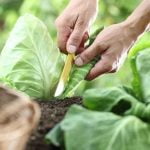Landscape gardening ideas for small gardens offer a unique opportunity to transform limited spaces into stunning outdoor sanctuaries. Despite the challenges of working with compact areas, there are endless possibilities to create beautiful and functional landscapes. In this article, we will delve into the world of small garden landscaping, exploring innovative design concepts and practical solutions for maximizing space efficiency.
Small gardens present a distinctive set of challenges, from lack of square footage to limited access for large machinery. However, with careful planning and creative strategies, even the tiniest outdoor areas can be transformed into thriving green spaces. By incorporating vertical elements such as trellises, hanging baskets, and vertical gardens, homeowners can make the most of every inch in their garden.
One key principle in designing small gardens is creating the illusion of space through clever layout choices and strategic plant selections. By choosing low-maintenance plants and space-saving varieties, gardeners can optimize their greenery while minimizing upkeep. Additionally, integrating hardscaping elements like paved pathways and raised beds not only adds visual interest but also enhances functionality in a smaller garden setting.
Challenges of Landscaping Small Gardens
Small gardens present unique challenges when it comes to landscape gardening, primarily due to the limited space constraints. However, with careful planning and strategic design choices, it is possible to transform even the tiniest outdoor areas into stunning green spaces. One of the key strategies for overcoming these challenges is to focus on maximizing every inch of available space in a small garden.
When dealing with limited space in small gardens, one effective approach is to utilize vertical gardening techniques. Vertical gardens allow you to grow plants upward instead of outward, making use of walls, trellises, and hanging baskets. Not only does vertical gardening help save valuable ground space, but it also adds visual interest and dimension to a small garden. Consider incorporating climbing plants like ivy or jasmine, as well as compact fruit trees like columnar apple or dwarf citrus varieties.
In addition to vertical gardening, another way to overcome space constraints in small gardens is by practicing smart plant selection. Opt for low-maintenance plants that won’t overcrowd the garden or require excessive pruning.
Choose space-saving varieties such as bush tomatoes, compact herbs like thyme or mint, and ornamental grasses like dwarf fountain grass. By carefully selecting plants that are suited to small spaces, you can create a harmonious and balanced landscape that thrives within the confines of a limited area.
| Vertical Gardening Tips | Smart Plant Selection |
|---|---|
| Utilize walls, trellises, and hanging baskets | Choose low-maintenance plants |
| Incorporate climbing plants and compact fruit trees | Opt for space-saving varieties such as bush tomatoes |
Maximizing Vertical Space
When it comes to landscape gardening ideas for small gardens, maximizing vertical space is crucial to make the most of limited area. With the right techniques and design elements, even a small garden can feel spacious and lush. Utilizing trellises, hanging baskets, and vertical gardens are excellent ways to add greenery and visual interest to a compact outdoor space.
Utilizing Trellises
Trellises are a practical and decorative way to add height to a small garden. They can be used to support climbing plants such as vines, roses, or even vegetables like tomatoes. By growing vertically, these plants take up minimal ground space while still providing beauty and functionality. Trellises come in various designs and materials, allowing you to choose one that complements your overall garden style.
Hanging Baskets
Hanging baskets are perfect for adding color and texture to small gardens without sacrificing precious floor space. They can be hung from pergolas, fences, or hooks attached to walls or ceilings. Fill them with trailing flowers like petunias or ivy, herbs like mint or basil, or even succulents for a low-maintenance option. Grouping several hanging baskets at different heights can create a stunning cascading effect that draws the eye upward.
Vertical Gardens
Vertical gardens, also known as living walls or green walls, are ideal for maximizing vertical space in small gardens. These structures feature plants growing on panels or frames mounted vertically on walls or freestanding structures.
Succulents, ferns, and herbs are popular choices for vertical gardens due to their compact growth habits. Not only do they add visual appeal and a touch of nature to urban environments but they also improve air quality by purifying indoor spaces adjacent to the garden wall.
Small Garden Design Principles
Small gardens present a unique challenge when it comes to design and landscaping. However, with the right small garden design principles, it is possible to create the illusion of space in a compact garden. One key principle is to make use of diagonal lines in your garden layout. By incorporating paths or flower beds that run diagonally across the space, you can create a sense of depth and visually expand the area.
Another effective way to enhance the feeling of space in a small garden is by using mirrors strategically. Placing mirrors on walls or fences can help reflect light throughout the garden, making it appear larger and more open. Additionally, choosing lighter colors for your garden furniture, pots, and accessories can contribute to a sense of airiness and expansiveness in a small outdoor area.
Furthermore, carefully selecting the right lighting for your small garden can make a big difference in how spacious it feels. Opt for soft, ambient lighting that illuminates key areas without overwhelming the space. String lights, lanterns, or small spotlights can all work well to create an inviting and cozy atmosphere while also enhancing the perceived size of the garden.
| Small Garden Design | Ideas |
|---|---|
| Diagonal Lines Layout | Create depth and visual expansion |
| Strategic Use of Mirrors | Reflect light to make space appear larger |
| Lighter Colors Palette | Add airiness and expansiveness to the garden |
| Soft Ambient Lighting | Create an inviting atmosphere while enhancing perceived size |
Choosing the Right Plants for Small Gardens
When it comes to landscaping a small garden, choosing the right plants is crucial to maximizing the space available and creating a visually appealing environment. One of the key landscape gardening ideas for small gardens is to opt for low-maintenance plants that require minimal care but still add color, texture, and interest to your outdoor space.
Succulents, such as echeverias and sedums, are excellent choices for small gardens as they are drought-tolerant and come in a variety of shapes and sizes. They can be planted in small containers or nestled among rocks for a desert garden feel.
Another great option for small gardens is to choose space-saving varieties of plants that have a compact growth habit. Dwarf varieties of trees and shrubs, such as miniature roses or dwarf conifers, are ideal for adding structure and height without overpowering limited space.
Compact perennial flowers like dwarf asters or dianthus can provide bursts of color without taking up too much room. Additionally, mixing in vertical plants like climbing vines or creepers can help add depth and dimension to your small garden by utilizing vertical space effectively.
Incorporating a mix of evergreen plants with seasonal bloomers can ensure year-round interest in your small garden without the need for constant replanting. Native plants are also a great choice for small gardens as they are well-suited to the local climate and soil conditions, requiring less maintenance overall.
By carefully selecting the right plants for your small garden based on their size, maintenance needs, and visual impact, you can create a vibrant and sustainable landscape that thrives in limited space.
Incorporating Hardscaping Elements
When designing a small garden, incorporating hardscaping elements can play a crucial role in maximizing space and creating an attractive outdoor area. By strategically planning the layout of paths, paving, and raised beds, you can not only add functionality to your garden but also enhance its overall aesthetic appeal. Here are some ideas on how to incorporate hardscaping elements effectively in landscape gardening for small gardens:
- Paving: Opt for smaller pavers or stones to create the illusion of more space in your garden. Consider using different materials such as gravel, concrete, or brick to add texture and visual interest to your outdoor area.
- Paths: Curved pathways can make a small garden feel more spacious and inviting. Use materials that complement the overall design of your garden and consider adding lighting along the path for added charm and functionality.
- Raised Beds: Raised beds are an excellent way to define planting areas in a small garden while also providing better drainage and accessibility for maintenance. Add depth and dimension by varying the heights of raised beds and consider incorporating seating around them for a practical and stylish touch.
Incorporating these hardscaping elements not only adds structure to your small garden but also helps create distinct areas within the limited space available. By carefully planning the placement of paving, paths, and raised beds, you can design a functional and visually appealing landscape that makes the most of your small outdoor area. With a thoughtful approach to hardscaping, you can transform your compact garden into a charming oasis that reflects your personal style and enhances the beauty of your home.
Remember to consider factors such as maintenance requirements, durability, and aesthetic cohesion when selecting materials for hardscaping elements in your small garden. By combining these features with lush greenery, colorful blooms, and other design elements, you can achieve a well-balanced landscape that brings joy and tranquility to your everyday life. Explore different options for incorporating hardscaping into your small garden design to create a space that is both practical and visually striking.
Adding Focal Points
When working with limited space in small gardens, adding focal points can make a significant impact on the overall design. These elements not only draw the eye but also create interest and add personality to the landscape. By strategically placing sculptures, water features, and garden art, you can enhance the beauty of your small garden and make it feel more spacious.
Here are some ideas for incorporating focal points in your small garden:
- Sculptures: Choose smaller sculptures or statues that complement the scale of your garden. Opt for pieces that reflect your personal style or add a whimsical touch to the space.
- Water Features: A small pond, fountain, or even a simple birdbath can bring tranquility and movement to your garden. The sound of flowing water can create a soothing atmosphere in a compact outdoor area.
- Garden Art: Consider adding decorative elements such as colorful ceramic pots, metal artwork, or repurposed materials like old windows or doors. These unique pieces can serve as focal points while adding visual interest to your garden.
By carefully selecting and placing focal points in your small garden, you can transform it into a charming and inviting outdoor retreat. Experiment with different combinations of sculptures, water features, and garden art to find what works best for your space. Remember that less is often more in small gardens, so choose focal points that enhance the overall design without overwhelming the landscape.
Maintaining a Small Garden
In conclusion, maintaining a small garden requires attention to detail and regular care to ensure that your landscape continues to look its best. One of the key aspects of keeping a small garden thriving is proper watering and fertilizing.
Since small gardens can dry out quickly due to their limited soil volume, it is essential to water them regularly, especially during hot summer months. Additionally, fertilizing your plants with a balanced fertilizer will help provide them with the nutrients they need to flourish.
Another important aspect of maintaining a small garden is staying on top of pruning and trimming tasks. Regularly pruning your plants not only helps control their size but also promotes healthy growth and flowering. In a small garden where space is limited, it is crucial to keep plants well-maintained and prevent overcrowding. This will not only improve the aesthetic appeal of your garden but also ensure that all plants have access to adequate sunlight and airflow.
Lastly, staying vigilant against pests and diseases is vital in maintaining a small garden. Monitor your plants regularly for any signs of pests or diseases, such as yellowing leaves or unusual spots.
By catching these issues early on, you can address them promptly and prevent them from spreading throughout your garden. Incorporating these maintenance tips into your routine will help you create a thriving landscape in your small garden that showcases innovative landscape gardening ideas for small gardens while providing you with an oasis of beauty and tranquility in even the most compact spaces.
Frequently Asked Questions
How Do You Make a Small Garden Beautiful?
One way to make a small garden beautiful is by carefully choosing the right plants that complement each other in terms of color, shape, and size. Adding elements like decorative mulch, unique planters, and garden ornaments can also enhance the overall aesthetics.
How Do You Make a Small Landscape Garden?
Creating a small landscape garden involves strategic planning to maximize the space efficiently. Utilizing vertical gardening techniques, such as hanging planters or trellises, can help add dimension without taking up too much floor space. Incorporating different levels like raised beds or stepping stones can also create visual interest.
How Do You Maximize a Small Garden?
To maximize a small garden, consider implementing dual-purpose features like seating with built-in storage or using containers that serve as both planters and seating options. Opting for compact varieties of plants and trees can help prevent overcrowding and maintain a sense of openness within the space.
Additionally, utilizing mirrors strategically can create an illusion of depth and expand the perceived size of the garden.

Welcome to my gardening blog! I am passionate about plants and enjoy sharing my knowledge and experiences with others. In this blog, I will write about everything related to gardening, from tips on how to get started to updates on my own garden projects.





